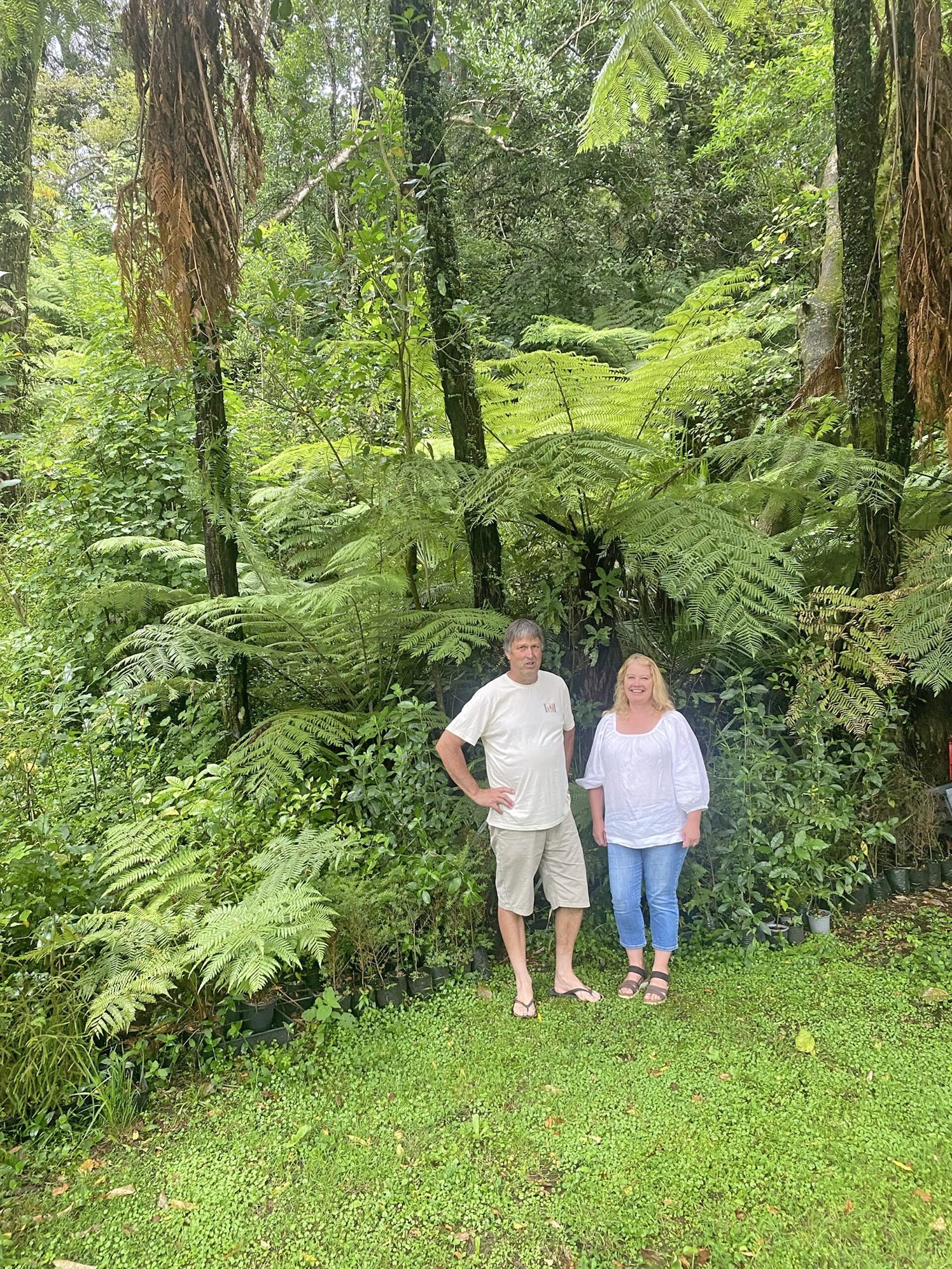Ballance awards for two Eastern Bay farmers

HONOURS: Brent and Antonia Mountfort of Mountfort Puriri Farm were recognised in this year’s Bay of Plenty Ballance Farm Environment Awards. Photo supplied
News Editor
Two Eastern Bay couples are among the winners in this year’s Bay of Plenty Ballance Farm Environment Awards.
Brent and Antonia Mountfort of Mountfort Puriri Farm in Whakatāne took home the Beef + Lamb New Zealand Livestock Farm Award, the NZFET Biodiversity Award and the Bay of Plenty Regional Council Farming for the Future Award at the awards ceremony held in Tauranga.
Canice O’Sullivan and Georgia Mischefski-Gray of Ywari Farms, Whakatāne won the Bayleys People in Primary Sector Award and the NZFET Innovation Award.
The supreme regional winners were Blair Dyer and Steve Atkinson of Kiwi Heights in Te Puke, who will now compete against the winners of 10 other regions at the New Zealand Farm Environment Trust’s national showcase in Wellington in June.
Mr Dyer and Mr Atkinson also won the Ballance Agri-Nutrients Soil Management Award, the Hill Laboratories Agri-Science Award, Norwood Farming Efficiency Award, Rabobank Agri-Business Management Award, FMG Risk Management Award and Zespri Kiwifruit Orchard Award
The Atkinson family has owned the property for more than 50 years, with kiwifruit vines planted in 2006. Since 2020, third-generation farmer Mr Dyer has been managing the kiwifruit crop, working closely with the Atkinsons to gradually transform more land into thriving orchards while preserving its natural ecology.
The 190.6 hectares (145ha effective) Te Puke property features 27.2ha of kiwifruit orchards. Young stock are grazed across 167ha, with this land interspersed with 5.5ha of mature forestry and 7.83ha of native plants to offset greenhouse gas emissions. A small number of livestock are also raised for dairy units in the Waikato.
One of the most significant initiatives has been the continual development of kiwifruit orchards while leaving much of the natural environment untouched. This has been done by developing the tops of hills and keeping marginal land for either native plantings or low-impact dry stock grazing.
The judges noted that careful planning and site selection helps minimise nutrient run off, soil biology disturbance and loss of topsoil. The strategic planting of native trees is stabilising steep slopes and offsetting greenhouse gas emissions – enhancing the farm’s ecological footprint.
The judges were impressed by the team’s holistic approach, which combines robust management practices with a deep commitment to environmental stewardship.
The Mountforts, second-generation farmers at Mountfort Puriri Farm, are focused on productivity and environmental stewardship, seamlessly integrating conservation into their sheep and beef farming practices.
The couple returned to the family farm in 2008, purchasing it outright in 2020. There’s almost a 50:50 split between cattle and sheep across the 267ha (145ha effective) property, with the couple running 130 Angus breeding cows, 650 ewes and 200 hoggets.
The Mountforts believe that profitable farming and environmental stewardship go together. They prioritise sustainable farming practices and actively explore methods to minimise greenhouse gas emissions.
The couple’s commitment to continuous improvement is evident in their meticulous approach to farm management. They have a clear picture of the farm’s soil class through extensive mapping, enabling them to carefully apply fertiliser only where it’s needed. Stock class is carefully tailored to land and most stock is finished on-farm, except for heifers, which are sold as yearlings after picking out replacements.
More than 80ha of native bush is fenced off, including 29ha protected by QEII covenants. In addition, 6ha has deer fencing to keep deer out, and a further 32ha is planted in pine.
The Mountforts have actively restored waterways, planted native trees, and implemented robust pest control measures.
To diversify their income and further integrate conservation into the business, they are developing a tourism venture – building a lodge that will allow visitors to experience the farm first-hand.
One way they actively support their wider community is by allowing groups to visit the farm for projects and demonstrations of good farming practices. The judges were impressed with their support of others in the industry, helping to provide clear pathways to a career in farming.

The Mischefski-Gray family has been farming in Whakatāne since 1990, with Llew Gray and Tania Mischefski starting with a 15ha block and slowly expanding it to today’s 350ha. They also lease 500ha of adjacent Māori Trust land, giving Ywari Farms a total effective area of 420ha. Since 2020, Ms Mischefski-Gray and Mr O’Sullivan have managed the farm. The operation finishes up to 600 bulls and 200 heifers annually. Recently, the annual purchase of 100kg bulls has created a more reliable supply as the business moves to finishing year-round. The remainder of stock is bred from the farm’s primarily Angus beef herd.
Ywari Farms’ focus on efficiency is evident in every aspect of its operation as the team strives to maximise production while minimising environmental impact. By carefully matching stock class to land use and adopting a closed-feed system, the farm optimises resources while reducing reliance on external inputs.
Sustainability is at the heart of the team’s ethos. Ywari Farms is meticulously managed, with waterways and 314 ha of native bush areas fenced – with the majority being protected by QEII covenants or Ngā Whenua Rāhui. By embracing technology, such as weighing systems and water management sensors, the team is actively reducing the farm’s environmental footprint.
To improve production, each year about 20ha of land is redeveloped into new pastures via helicopter cropping. Pests and weeds are actively controlled, and the team has diversified by planting pine trees on steeper areas.
The judges were impressed with the property’s subdivision, backed up by a calculated pasture renewal strategy that focuses on both soil health and water conservation.